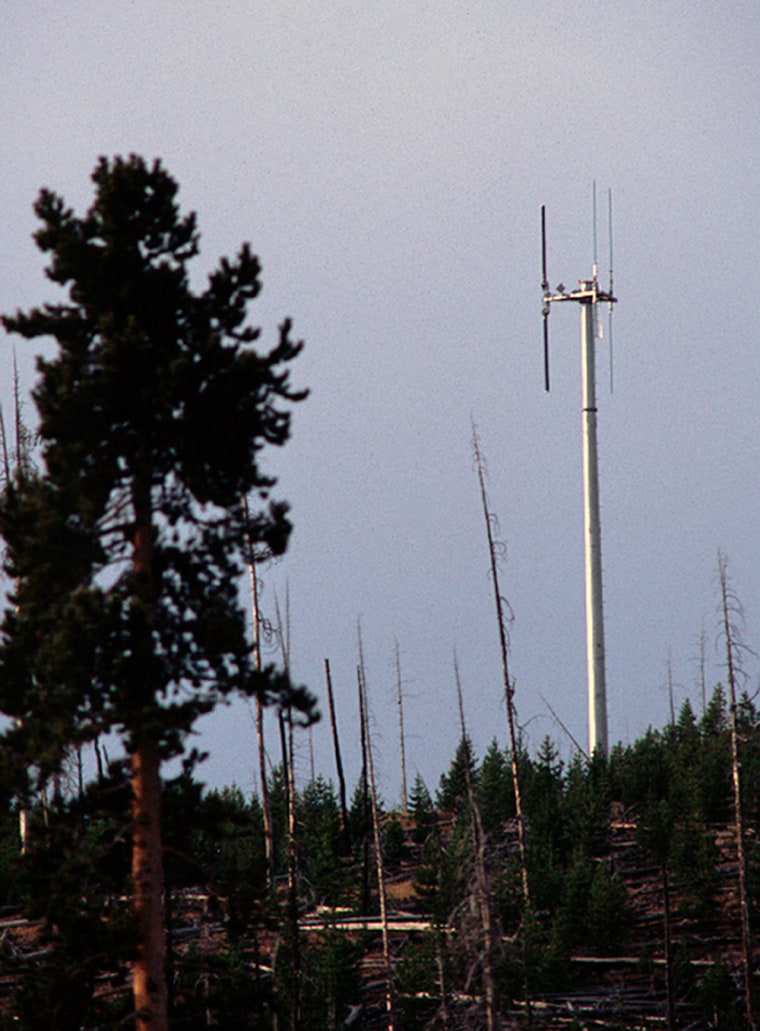Yellowstone National Park officials, attempting to balance competing demands for cell phone service and preserving the park's tranquility, have released a draft plan to guide the development of wireless services within the park.
The environmental assessment proposes a limited increase in cell phone coverage in the 3,500-square-mile park while excluding cellular towers from the backcountry, park road corridors and smaller developed areas.
The plan also calls for providing cell phone service and wireless Internet in larger developed areas with hotels and stores.
"That doesn't mean there couldn't be some service outside those immediate developed areas, but it's not something we're planning, proposing or intending," park spokesman Al Nash said Tuesday.
The assessment found that Yellowstone's wireless communication plan would have negligible effects on resources such as threatened and endangered species, migratory birds and wilderness. It found a potentially moderate impact on "visitor use and experience."
Under the plan, the cellular tower located near Old Faithful geyser — the park's most visited site — would be transferred to a less visible site at a nearby water treatment plant.
Its placement within sight of Old Faithful about 10 years ago kicked off a debate over the construction of cellular towers in the park, said Tim Stevens, program manager for National Parks Conservation Association.
He said Yellowstone's plan is key to protecting the park's natural resources. He said it would also protect public safety by providing the necessary infrastructure for park staff to communicate. It also is likely to set a precedent for other national parks, he said.
"One of the things that it comes down to in an increasingly noisy and hectic world is that it's critical that Yellowstone continue to provide the solitude and peace and quiet that our first national park has to offer," Stevens said.
John Woody, vice president of Union Telephone, said the Wyoming-based company leases space on towers constructed and owned by Alltel Corp. at Grant Village and Old Faithful. Union officials have met several times with the National Park Service regarding cell phone service inside the park, he said.
"After five years of working on this project, it is a significant step forward to finally have a plan from the Park Service that we can work from to address these critical safety and security issues," Woody said. "We are disappointed, however, that the Park Service did not include more areas where the public congregates for this extended service."
Stevens said he was worried that cell phone improvements at developed areas would result in increased wireless use in places such as the Grand Canyon of the Yellowstone and Yellowstone Lake.
"We do have concerns that that type of scenic splendor could be potentially spoiled by tens and hundreds of people placing calls along the shores of the lake in what used to be a place of solitude and contemplation," he said.
The environmental assessment attempted to address such concerns, calling for the park to promote the "courteous use of cell phones and other portable communications technologies."
Yellowstone averaged 15,690 visitors per day during its peak season of May through September in 2007, Nash said.
"It's not a unique question to a place like Yellowstone, but we're certainly a place where we can encourage individuals to acknowledge the interests of others around them while they're using cell phones and to consider their volume, to consider where or when they're making or taking a call," he said.
In areas outside of cell phone range, visitors will still have access to pay phones located along roadways inside the park, Nash said.
Yellowstone will hold public meetings next month in Idaho and Montana to gather feedback on the draft plan. Public comments are due by Oct. 31.
